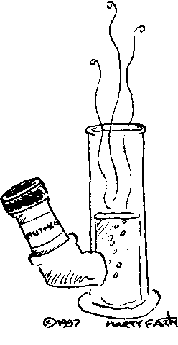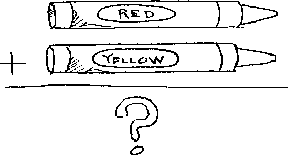

Fat Tony - Wilmington, DE
Itís good that you do everything that our considerate government asks of you. All you have to do is start listening to televangelists and infomercials and you will be a complete person. While youíre at it, you might as well send me a few hundred bucks. God said to.
Nutmeg, the seed of the Myristica fragrans tree, is available to the general populace in the form of whole nuts or as a powder. Unlike the fairly dubious practice of smoking banana peels (will you kooky kids do anything for a quick buzz?), there does indeed seem to be something to this nutmeg theory of yours. High enough doses can produce hallucinogenic effects similar to those produced by LSD or too much daytime television.
 Nutmegís psychogenic properties become apparent at doses as low as 5 grams, though it may take as much as 30 grams for you to kiss the sky. Nutmeg is typically ingested in its powdered form (usually by prisoners who have no other access to mind altering drugs) and to give you something of a guideline, a tablespoon of ground nutmeg is roughly equivalent to 7 grams.
Nutmegís psychogenic properties become apparent at doses as low as 5 grams, though it may take as much as 30 grams for you to kiss the sky. Nutmeg is typically ingested in its powdered form (usually by prisoners who have no other access to mind altering drugs) and to give you something of a guideline, a tablespoon of ground nutmeg is roughly equivalent to 7 grams.
Unfortunately, for those of you who are now thinking that Nirvana (the place, not the band, you benighted MTV drones) is located in the spice aisle of your nearest grocery store, you should be warned that your trip will carry a heavy price. A typical high may last for as long as 24 hours and will be followed by severe nausea, headache, dehydration, constipation and body aches. The dosages needed to produce a truly hallucinogenic effect are also dangerously close to those which make up a toxic overdose. There canít be a much more humiliating way to die.
I will also point out to those of you who may still be considering this as a cheap alternative to malt liquor, that nutmeg is also commonly mixed with lard for use as a hemorrhoid preparation. If that doesnít take some of the glamour out of it, nothing will.
If you really want to see stars, maybe you should bang your head on the table a few time and leave the nutmeg in your pie.
Mad-Dog:
I am not an idiot. I know, as does most of the rest of the world, that yellow, red and blue are the three primary colors that make up all other colors. Why is it that computer monitors use red, green and blue to produce all the colors? How do you make yellow from those colors?
Anna S. Peoria, IL
"Not an idiot?" I think itís best to leave a judgment call like that to an expert (i.e., me).
What you failed to learn, somewhere in your personal course of evolution, is that there are two distinct methods of mixing colors: additive and subtractive. When you mixed watercolors in kindergarten and painted half a million pictures of smiling cats, all of which hung on your refrigerator, you were using the subtractive method of color mixing. The three primary colors of subtractive color mixing are, as you said, red, yellow and blue. The more color pigments you add, the closer you get to black.
ďSo, if we are adding colors, why is it called subtractive color mixing?Ē you ask. You did ask that, didnít you. I know you did. You are subtracting light, not pigment. Allow me to elucidate:
 Pure white light is made up of the three colors of additive color mixing: red, green and blue. The more color (light) we add, the closer we get to white. For example (and since you asked), yellow light is made up of red and green light. If we add blue light, we get a brighter yellow. The more blue we add, the lighter it will get until we finally have pure white light.
Pure white light is made up of the three colors of additive color mixing: red, green and blue. The more color (light) we add, the closer we get to white. For example (and since you asked), yellow light is made up of red and green light. If we add blue light, we get a brighter yellow. The more blue we add, the lighter it will get until we finally have pure white light.
How does that tie into subtractive color mixing, then? Okay. If your Home Shopping Network-addled mind will still allow you this luxury, imagine a sheet of white paper. The paper is reflecting pure white light into your eyes. If you put pigment (paint, markers, blood, etc.) on the paper, some of the reflected light is being absorbed. What is not absorbed is reflected to your eyes.
Suppose you throw some yellow paint down on your white paper. Yellow pigment actually absorbs blue light. The light that is then reflected to your eyes is red and green which I told you a few paragraphs ago combine to make yellow light. This yellow light is reflected to your eyes where you behold a wonderful painting of a lemon.
Mad-Dog: Master of the Universe
123 Ball Hill Rd.
Milford, NH 03055
Mad-Dog e-mail hotline:
Email Maddog Your Most Pressing Questions
SEND COOKIES!!!!